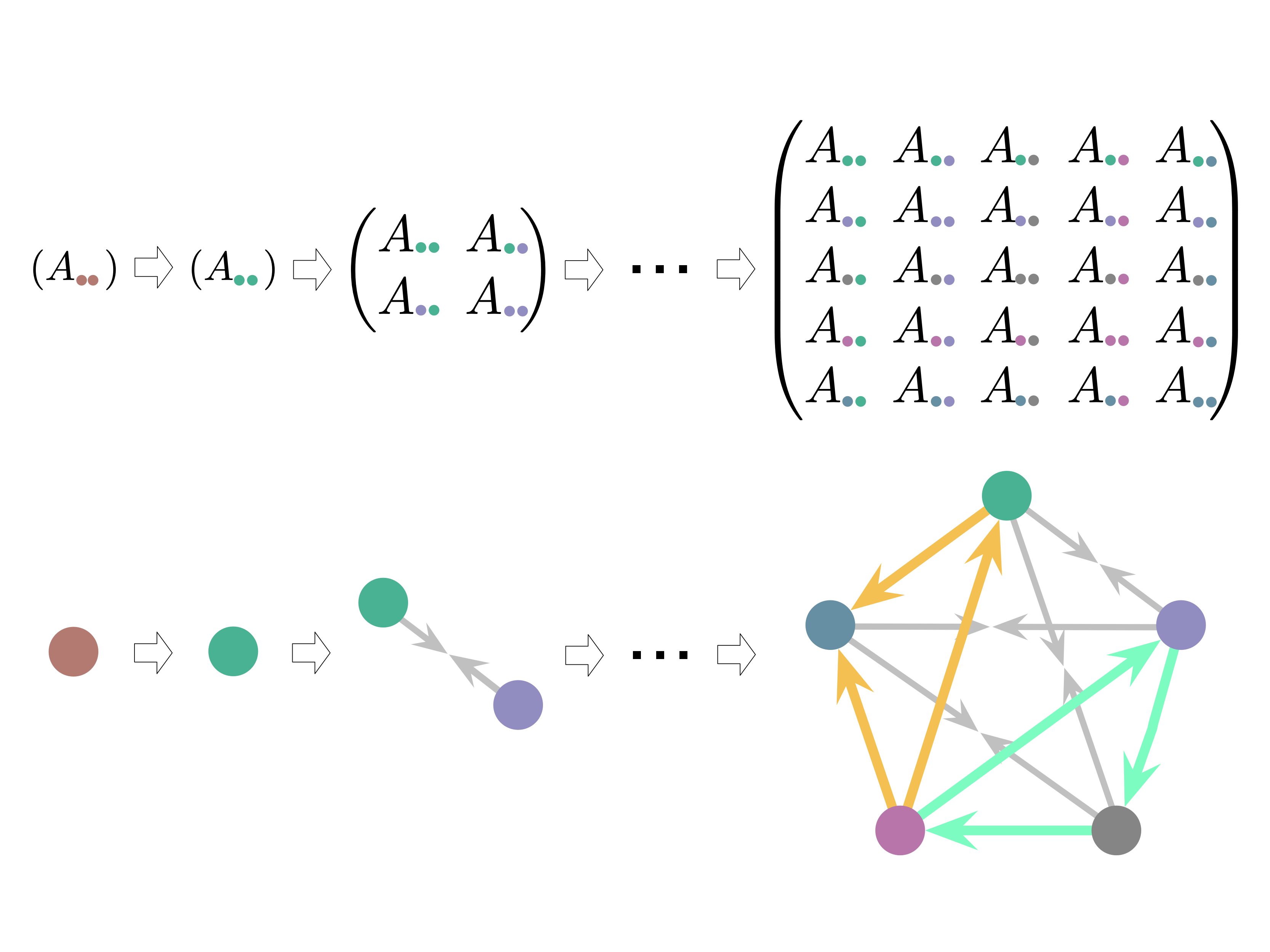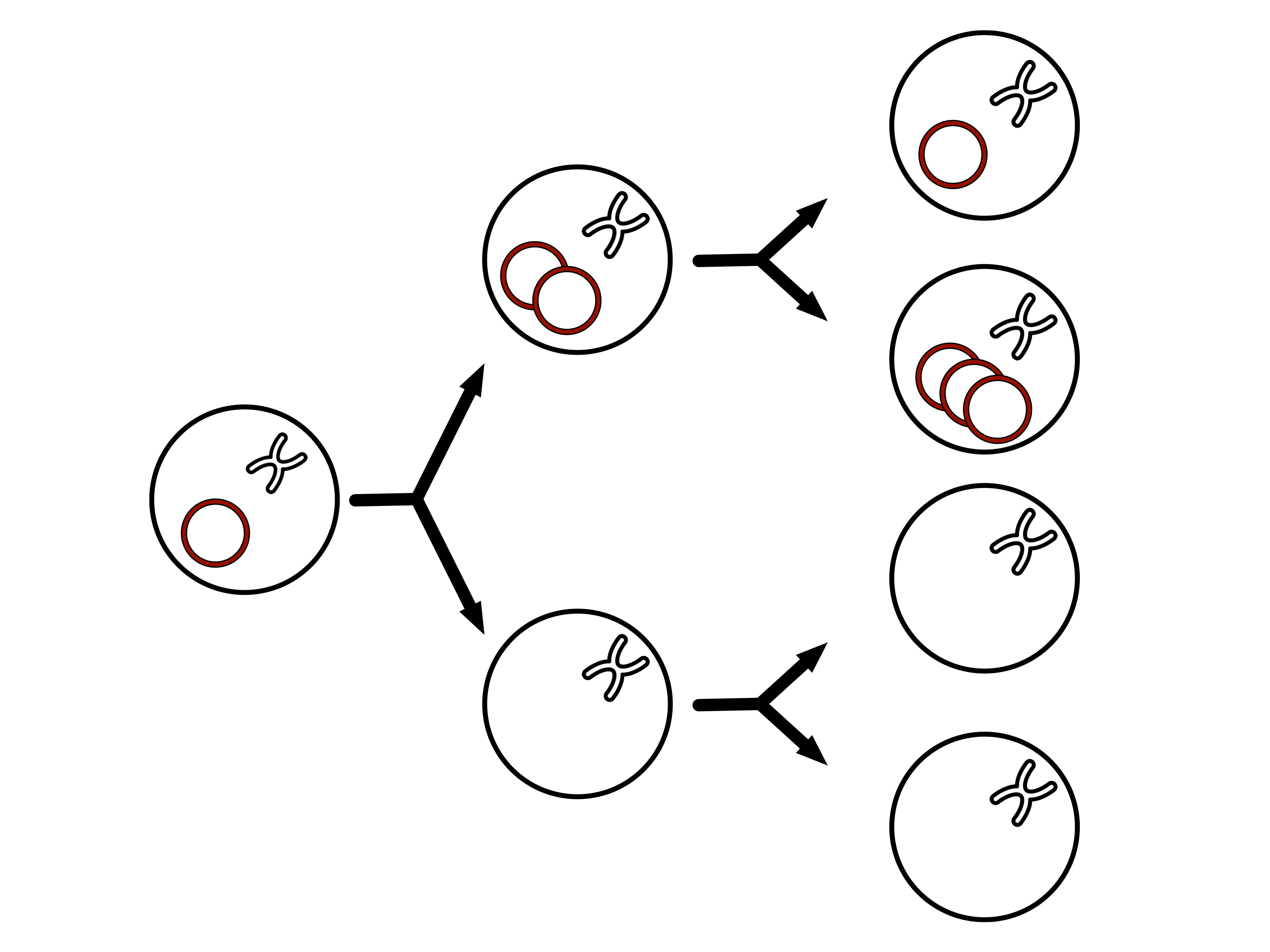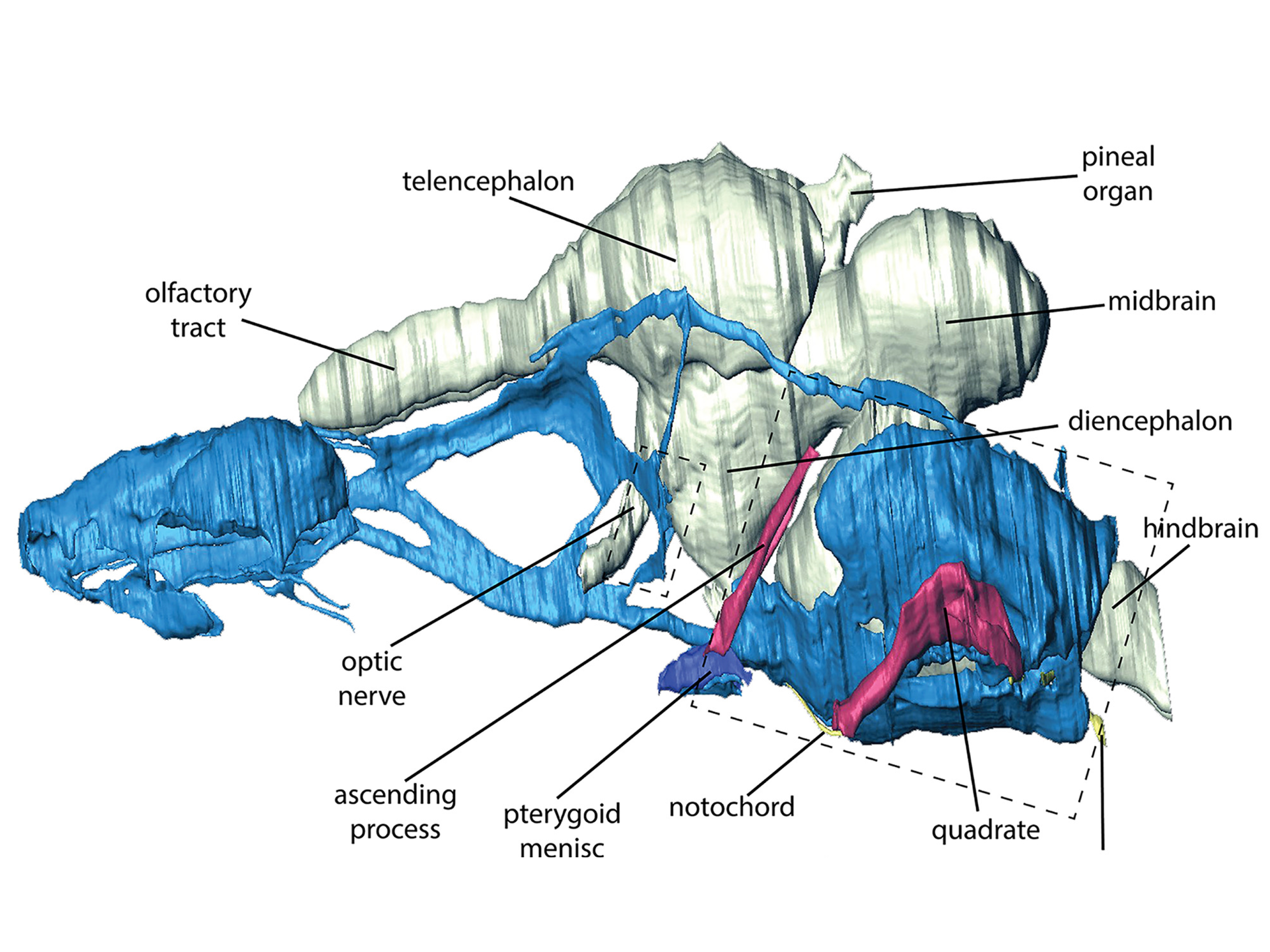Collaborations
Exciting side quests
Eco-evolutionary dynamics in the mutant game
Principal collaborators: Dr. Hye Jin Park, Dr. Weini Huang, Dr. Arne Traulsen.
In evolutionary game theory, the fitness of the individual is determined by a payoff from a game with other members of the population. The mutant game starts with a population made of a single species (and hence a 1-by-1 payoff matrix). New species are allowed to emerge as a result of mutation. At each such event, the payoff matrix gets extended with new payoff elements derived from corresponding matrix elements describing the interactions of the parent species. Whenever a species goes extinct, the matrix shrink, as the corresponding elements get discarded. The mutant game creates an open-ended dynamical population, in which not only the population composition but also the rules of interaction between its members are subjected to natural selection.

Papers
Population size changes and extinction risk of populations driven by mutant interactors. Park, H.-J., Pichugin, Y., Huang, W., and Traulsen, A. Phys. Rev. E, 2019. (link)
Why is cyclic dominance so rare? Park, H.-J., Pichugin, Y., and Traulsen, A. eLife, 2020. (link)
Stochastic dynamics of ecDNA in cancer tumors
Principal collaborators: Dr. Benjamin Werner, Dr. Weini Huang.
Besides the chromosomes, cancer cells also contain extrachromosomal DNA. These ecDNA pieces are replicated at every round of cell division but unlike chromosomes, their distribution to the daughter cells is not controlled by the centromeres. As a result, the dynamics of ecDNA copy numbers distribution is stochastic.

Papers
The evolutionary dynamics of extrachromosomal DNA in human cancers. Joshua T. Lange, John C. Rose, Celine Y. Chen, Yuriy Pichugin, Liangqi Xie, Jun Tang, King L. Hung, Kathryn E. Yost, Quanming Shi, Marcella L. Erb, Utkrisht Rajkumar, Sihan Wu, Sabine Taschner-Mandl, Marie Bernkopf, Charles Swanton, Zhe Liu, Weini Huang, Howard Y. Chang, Vineet Bafna, Anton G. Henssen, Benjamin Werner & Paul S. Mischel. Nature Genetics, 2022. (link)
Stochastic dynamics of extra-chromosomal DNA. Pichugin, Y., Huang, W., and Werner, B. bioRxiv, 2019. (link)
Legless lizards and their skulls
Principal collaborator: Dr. Oleksandr Yaryhin
Lizards and snakes form a monophyletic group called squamates. Among them, a large number of species have their limbs reduced or absent. On a seemingly unrelated note, the squamates’ head features a structure called chondrocranium: a structural frame made of cartilage - it supplements the skull made of bone. The chondrocranium is also found to be reduced in several species across squamates. It turns out that reductions in limbs and chondrocranium are, for some reason, correlated.

Paper
Limb reduction in squamate reptiles correlates with the reduction of the chondrocranium: a case study on serpentiform anguids. Yaryhin, O., Klembara, J., Pichugin, Y., Kaucka, M., and Werneburg, I. Developmental Dynamics, 2021. (link)